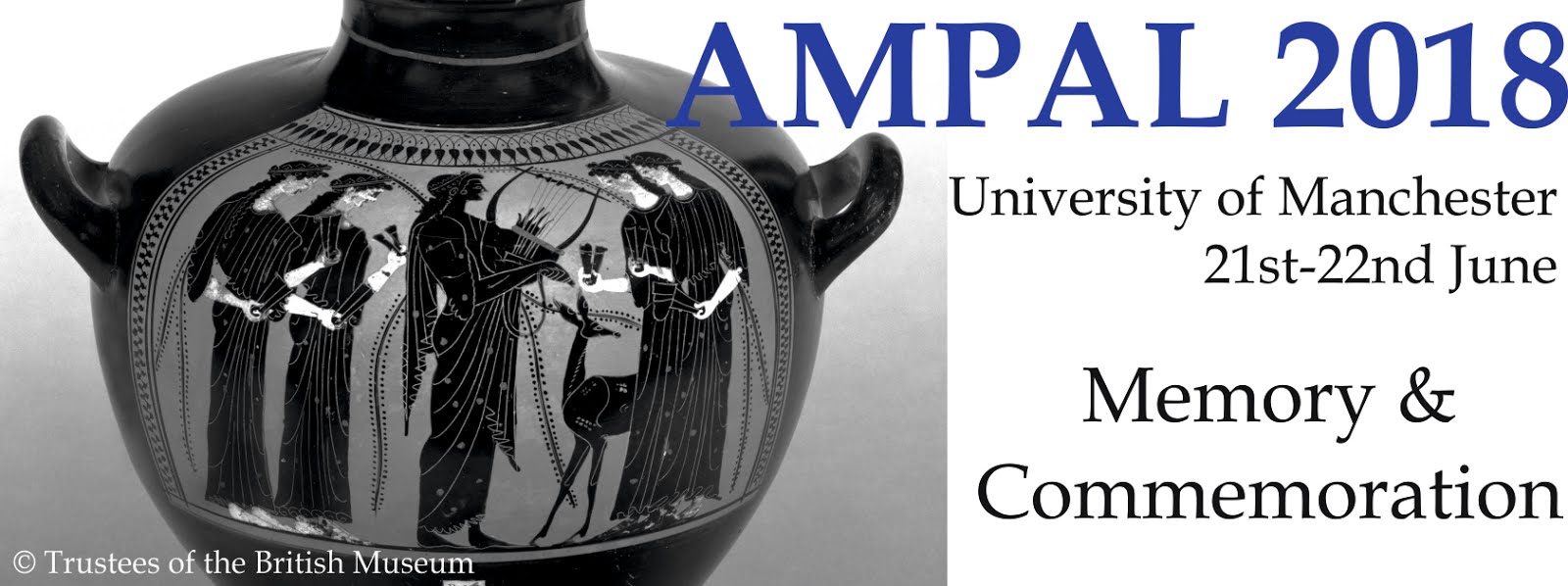Parallel session 2, panel 2: Modern Reception
(Thursday 21st
June, 11.45-1.15pm)
Recycling Plato: The Memory of Plato’s Chariot in The Trevi Fountain
Lotte Van Olman (University of Ghent)
Lotte Van Olman (University of Ghent)
The Trevi Fountain, designed in 1732 by Nicola Salvi, has
been interpreted as a symbolic representation of contemporary enthusiasm for
meteorology. Ten years before the Trevi Fountain was designed, Giovanni Poleni
discovered the principle of water circulation: water evaporates, clings
together in clouds, condensates and rains back on the earth. Hereward Lester
Cooke, among others, links this scientific discovery to Salvi’s design, casting
the classical elements aside as ornamental. Thereby Cooke reduces the Trevi
Fountain to a ‘useful lesson and an explanation of natural phenomena’, wrapped
in ‘a cloak’ of mythology.
However, this ‘mythological cloak’ needs further
investigation. Salvi was presumably familiar with Plato, for Plato was topic of
debate in the early Italian Enlightenment (B. William, S. Moravia, G. Papini).
Having Plato in mind, the difference in character between the two horses of the
Trevi Fountain is remarkable: one horse is obstinate, and dragged backwards,
the other is good and encouraged forward. The difference in character between
these two horses, strongly reminds us of Plato’s horses. In the Phaedrus,
namely, Socrates uses the image of a horse chariot for the soul in love,
whereof one horse is intemperate and needs to be dragged backwards and the
other is brave and encouraged.
I will research to what extent the concept of Plato’s horse
chariot has inspired the horse chariot in Salvi’s Trevi Fountain. I will do
this by looking, among other things, at Salvi’s instructions to his architect
Panini and consequently investigate how the two interpretations of the Trevi
Fountain can be reconciled. In other words: why would Salvi recycle the
metaphysical language of Plato to talk about a natural phenomenon like water?
This research on the Trevi Fountain sheds light on how memory of the classical
past can be used as a language to talk about the present. Salvi, through
memory, mythologized the present.
Elagabalus: the worst of them all? Why cultural attitudes to gender
caused 18th and 19th century historians to vilify an emperor the 21st century
has largely forgotten
Kathryn Adams (The Open University)
Kathryn Adams (The Open University)
In The Decline and Fall of the Roman Empire,
published in 1789, Edward Gibbon stated that the behaviour of Elagabalus has an
‘infamy that surpasses that of any other age or country’. This depiction of
Elagabalus as not only the worst Roman emperor but the worst figure in history
is compounded by another historian forty years later. In The Roman Empire,
published in 1827, Barthold Niebuhr states that ‘the name Elagabalus is branded
in history above all others’. Elagabalus is not an emperor that has received
much attention in modern scholarship and is unlikely to be named by any scholar
as a particularly villainous figure from the classical world, let alone all of
history.
This paper will focus on how Niebuhr’s and Gibbon’s
depictions of Elagabalus are heavily influenced by the prevailing attitudes to
ideas of masculinity at the time they were written.
Elagabalus became emperor at the age of 14 and ruled from
218-222 AD. Dio, Herodian and the Historia Augusta paint a picture of a
feminine boy who flaunted male boyfriends around court, making clear he played
the passive role in these relationships. The primary sources heavily suggest
that Elagabalus’ refusal to fit in with Roman ideals of masculinity played a
large part in his brief time in power. This negative attitude to Elagabalus
existing outside of a narrow gender binary was echoed by Gibbon and Niebuhr
writing in the late 18th and early 19th centuries. An exploration of how the
cultural bias of both historians affected their reception of the primary
sources will show that the negative depictions of Elagabalus are largely due to
their refusal or inability to recognise the societal attitudes implicit in
their analysis of the emperor.
Selective Memory: the Ancient World and Modern Hate Groups
Alexander Hardwick (University of Oxford)
Alexander Hardwick (University of Oxford)
For two millennia, the ancient world has been commemorated
in literary, cultural and political thought. This isn’t always a good thing. In
recent years, a growing number of modern hate groups have used Classics to
justify their misogyny and racism. Though deplorable, this is part of how the
Classical world is remembered today. This paper argues against such misuse of
the Classical tradition. After exploring how these movements have
misappropriated the Classical world, this paper explains why they are wrong to
do so. Classical Greece and Rome may seem far more patriarchal and oppressive
than modern society, but a closer look reveals more nuance and tolerance in
ancient societies’ views of race and gender. Furthermore, our understanding of
race and gender in the ancient world is conditioned by the sources we possess.
The first part of this paper summarises the history of hate
groups’ appropriations of Classical motifs, demonstrating how modern hate
groups’ appropriations are rooted in Nazi-era propaganda. This paper then
surveys material drawn from modern hate groups, in order to establish a pattern
of how and why the Classical world is reinterpreted to suit their agendas. It
then explores the fundamentally selective nature of this memorialisation,
discussing the ways in which a more balanced and tolerant side to the ancient
world has been ignored or deliberately elided. Finally, we must remind
ourselves that much of our source material is drawn from authors of the same
race, class and gender: this paper discusses how we can allow ancient minority
voices to play a greater role in our memory of the ancient world.

Comments
Post a Comment